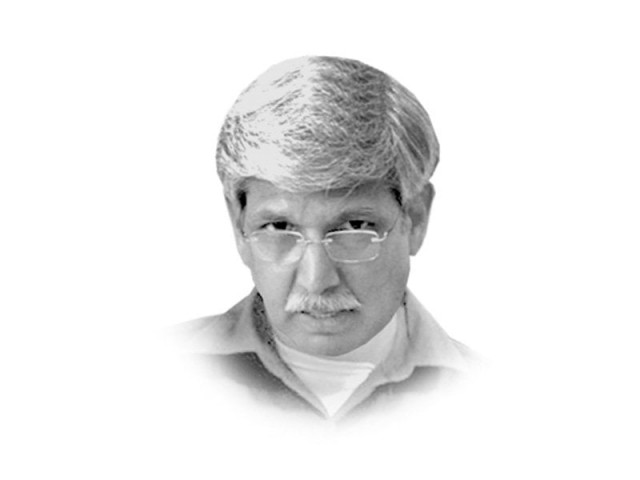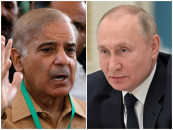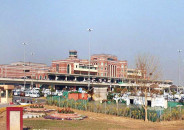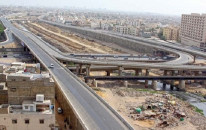Getting to know Modi better
Our responses need not be confrontational but aimed at achieving a favourable political state — not a win, always

The writer is a political and security analyst who retired as an air vice-marshal in the Pakistan Air Force
Modi and the visiting president first walked out to the lawn and casually strolled to the edge of a water pool; stood there for a while, and then walked the pathways till finally settling down at a strategically located point for the cameras where the two had their tea or coffee. Even the pouring of the tea by Modi for the president was a fully-loaded act. It was an unadulterated Modi-Obama moment where Modi hoped to be seen together with Obama exclusively, in the same bracket, same frame, and at the same height. He felt pleased to pour out Obama’s tea for him, rekindling the pride of his beginnings even as he hosted the world’s most powerful man. Vintage Modi.
There is nothing casual about this man. He works everything meticulously, not missing a comma or a full stop; nor the intended nuance. Everything he does is aimed at attaining a well-intended objective. Many loudly wished they were there to listen to the chat; to me it was insignificant. What was significant was what was on display. ‘Attention to detail’ is what explains Modi. What do we have in comparison?
Some of what Modi did was cheap, like calling Obama, ‘Barack’, not once but 19 times by one count, failing to evince an intimate ‘Narry’ or Narendra, or some such, in return. The US president remained formal in addressing Modi, as was the wont of the moment. Other than this one faux pas, the visit, to the viewing public, was flawlessly executed; Obama raised to the heavens in the manner of his treatment. (As Obama reached Saudi Arabia, though, to condole with the new king, the passing away of his predecessor, he had to bear his relegation to God, as the king left his guests unattended when the call to prayer was made). I narrate this only to define the difference in how Obama’s Delhi visit was enacted and how it was for him soon back to the real world after Delhi — from Wonderland to Washington Beltway.
Modi is clear-headed; knows what he wants and then works the details to achieve every bit of it. Without such drive, a chaiwala can hardly be expected to rise to be a prime minister. Looking back at the Obama visit, Modi wished India and himself to be seen in a different league. He achieved most of this. India was mentioned in Obama despatches as a global partner; invited to the high table of global geopolitics as Obama enunciated the evolving role for such partners to checkmate a rising China, especially in the South China Sea and in the Indian Ocean; and received American backing for a permanent seat at the UN Security Council. That’s a lot for a three-day workout.
Of course, Modi also gave something in return: on the liability issue where India will find a way around its more restraining laws and around even difficult politics — again to enable America to sell India its nuclear reactors; and, change equity laws to enable foreign investments in the defence sector — again for the Americans to set up their wares and sell even more to India; and in what was left unstated publicly, for India in accepting to rationalise its stance with its neighbours (read: Pakistan) to establish a relationship of maturity and reason. Nothing derogatory. That is how modern interstate relations function, more in the domain of growing inter-dependencies, which create layers of association that at a certain level, and in some fields, are harmonious; and at other levels, competitive, and at yet another level, confrontational. No nation dwells on zero-sum objectives, and that is why it is difficult to define one relationship to be exclusive over another.
What is of essence here is the leadership that India is under at this time and will likely be for the next 10 years. Modi can be pliable where needed, hard-headed where he feels that will deliver what he needs, but at all times, clear regarding both his policy and strategy. When he pushes Pakistan to conform to the demands of new India in leaving out Kashmir from the international agenda, or punish the Mumbai trial suspects before a dialogue can be granted to Pakistan, he works on a well-established plan. Add to it the pressure that he generates on Pakistan through frequent ceasefire violations, and it all adds up in seeking an acquiescent Pakistan ready to concede to an all-pervasive India, which is much larger, much richer and much stronger. Whether he will succeed or not in his design is yet to be seen; so far he has not, but understanding the design for Pakistan is important, especially when it only retorts with pet responses more akin to slogans.
Modi needs to be managed, neither abhorred nor feared; his designs need to be first understood and then contended with smarter designs from the conception table. Again, our responses need not be confrontational but aimed at achieving a favourable political state — not a win, always. Of that, though, there is little space, inclination or time in Pakistan. Pakistani politics is all about domestic politics, even when in government; it is never about governance or administration or policy or something as remote as a vision. There is a gaping hole instead, politics not yet having risen to that level of cognisance. Compare that with Modi’s way of doing things.
What will keep Modi back and his dreams unfulfilled? Of that, too, there is little confusion. In fact, Obama stated that very well. At the end of his stay in India, when addressing a gathering, he reminded India to be tolerant of the ‘other’, of another religion, race or a region, or of another people, because without such harmony and inclusivity, India will barter all its advantages when blinded by ambition to establish, racial, ethnic, religious, regional or global exclusivity. In other words, keep the swords sheathed on Article 370, on the Uniform Civil Code, on Babri Mosque, or in letting people of other religions pursue their religion freely.
Modi’s next stop is China and the signs from up there too are ominous. Both Russia and China seemed to have agreed to support India’s full memberships to both the SCO and the Apec. They also speak of the need for wholesome reform to the UN Security Council — qualified support only for the moment, but getting the two behemoths to move is not insignificant. Pakistan may have its hands full but it will help to keep an eye on its neighbour before the lag is unbridgeable.
Published in The Express Tribune, February 7th, 2015.
Like Opinion & Editorial on Facebook, follow @ETOpEd on Twitter to receive all updates on all our daily pieces.



















COMMENTS
Comments are moderated and generally will be posted if they are on-topic and not abusive.
For more information, please see our Comments FAQ